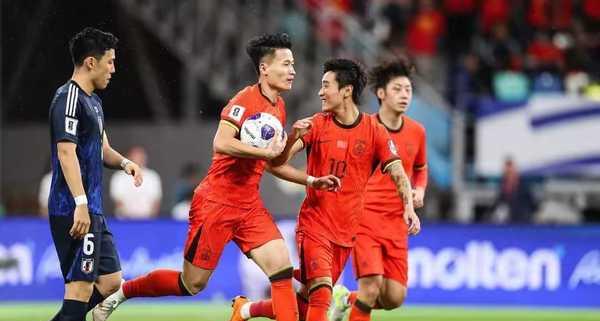Chinese National Team's Historic Goal Against Japan
In a notable World Cup qualifier match, China scored against Japan in a 1-3 loss, marking their first goal against Japan in competitive matches since 2004, demonstrating improved team spirit and tactical execution.

The significance of China’s goal against Japan extends far beyond the scoreline. This goal represents a pivotal moment in Chinese football, being the first time China has scored against Japan in a World Cup qualifier since 2004, and notably, the only goal Japan has conceded in their current qualifying group.
The Chinese team’s performance showed remarkable evolution from their previous encounter. Just months ago, they suffered a devastating 0-7 defeat against Japan, displaying minimal offensive threat. However, this match painted a different picture. For the first 38 minutes before Japan’s opening goal, China created more effective attacks and shots on target than their opponents.
The tactical approach employed by China’s head coach marked a significant departure from previous strategies. Rather than adopting a defensive stance, the team implemented a high-pressing 4-6-0 formation, focusing on midfield control and quick transitions. This aggressive style forced Japan’s European-based stars like Ito Junya, Endo Wataru, and Kubo Takefusa to play uncomfortably.
Lin Liangming’s goal exemplified this tactical transformation. Rather than resulting from a long ball or set piece, it came through a series of quick passes and movements, demonstrating improved team coordination and confidence. The goal’s construction showed that Chinese players were no longer hesitant to take initiative against stronger opponents.
The psychological impact of this performance cannot be understated. While Japan ultimately won 3-1, the Chinese team maintained their competitive spirit throughout the match, showing none of the psychological barriers that had previously plagued them against stronger Asian opponents. Players displayed unprecedented confidence in possession and decision-making, even when under pressure from Japan’s pressing.
However, challenges remain. China’s defensive organization during set pieces still shows vulnerability, and maintaining concentration throughout the full 90 minutes remains an issue. These aspects require attention for future development.
Looking ahead, this performance provides a blueprint for China’s football development. The team demonstrated they can compete effectively when combining tactical discipline with aggressive intent. While qualifying for the World Cup remains challenging, this match showed that the gap with Asia’s elite, while still significant, is not insurmountable with the right approach and mentality.
For Japanese football, this match served as a reminder that their dominance in Asia cannot be taken for granted. The goal they conceded to China was not just a statistical anomaly but a sign that other Asian teams are evolving in their tactical sophistication and competitive mentality.